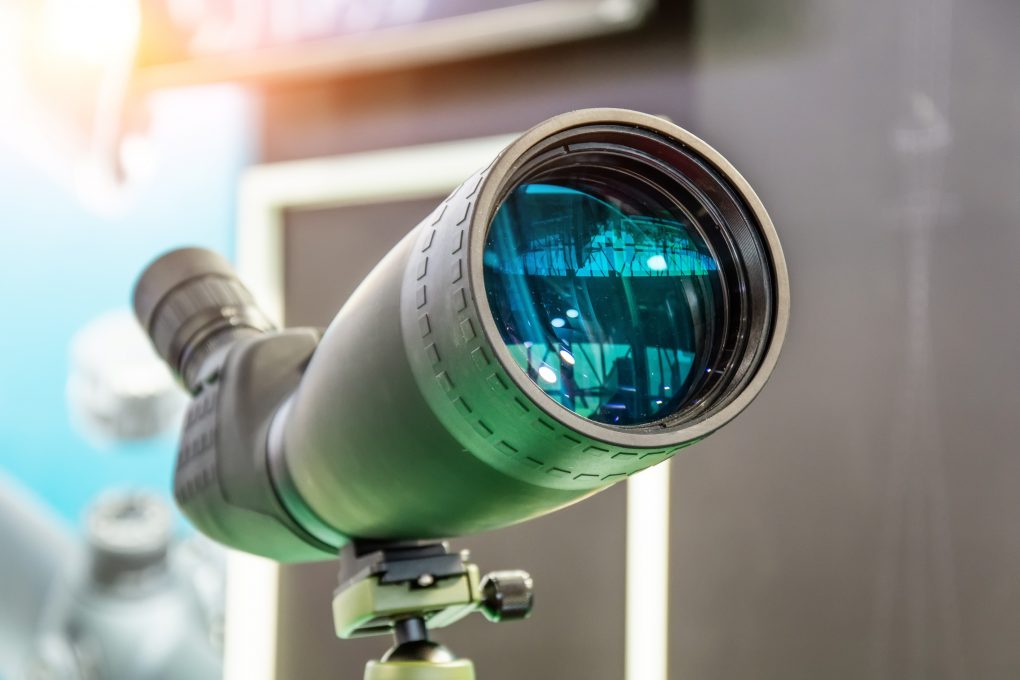This article delves into the versatility of night vision monoculars, from military and law enforcement to recreational activities like hunting. It explores their functionality, types, and effectiveness in surveillance. Additionally, it addresses considerations and legal aspects associated with their use.
What is a Night Vision Monocular?
A night vision monocular is a portable optical tool that amplifies available light for improved nighttime visibility. Widely used in military, surveillance, and outdoor settings, its standout feature is detecting infrared light, converting it into visible images, enabling clear vision in darkness. Enhanced by image intensifier tubes, it boosts contrast and brightness, ensuring clarity in low-light environments.
How Does a Night Vision Monocular Work?
A night vision monocular uses advanced technology like CMOS sensors and an IR Illumination Kit. These components collaborate to capture and amplify ambient light, generating visible images in low-light conditions. CMOS sensors convert light into electronic signals and are highly sensitive to faint light levels. The IR Illumination Kit emits infrared light, unseen by humans, but enhances visibility for the monocular sensors. Together, they transform darkness into recognizable scenes by converting infrared reflections into visible images.
What Are the Uses of a Night Vision Monocular?
Night vision monoculars are versatile tools for covert observation, security monitoring, and tactical surveillance. They are pivotal in military, law enforcement, wildlife observation, and outdoor activities, offering enhanced visibility in low-light conditions. Meeting Mil-Spec standards, they ensure durability and performance in challenging environments. In hunting, they enable clear nocturnal wildlife observation, improving safety. For surveillance, they utilize infrared technology for effective monitoring and threat detection, aiding decision-making and personnel safety.
What Are the Types of Night Vision Monoculars?
Night vision monoculars are classified into generations based on their technology and performance levels: Generation 1, Generation 2, and Generation 3. Generation 1 devices, offering basic capabilities, are often used for recreational purposes due to their affordability. Generation 2 monoculars feature improved image quality and low-light performance, making them suitable for hunting and surveillance. Generation 3 devices represent the latest advancements, providing exceptional clarity and performance. Consequently, they are preferred by law enforcement and military units for their superior capabilities.
Can a Night Vision Monocular Be Used for Surveillance?
Night vision monoculars excel in surveillance with advanced lenses and infrared technology, offering clear vision in low-light or dark environments. Their compact, lightweight design ensures easy transport and discreet use, which is ideal for covert operations. They enable magnification of distant subjects without detection, enhancing effectiveness in observing from a safe distance.
Advantages of Using a Night Vision Monocular for Surveillance
Using a night vision monocular for surveillance offers distinct advantages, such as enhanced nighttime reconnaissance, improved monitoring equipment, and heightened security monitoring capabilities.
These advanced optical devices enable users to conduct covert operations in darkness, providing clear visibility in low-light conditions and offering a tactical edge in various scenarios.
Observing targets discreetly from a safe distance enhances situational awareness and decision-making processes, key factors in successful surveillance missions.
Limitations of Using a Night Vision Monocular for Surveillance
Despite their effectiveness, night vision monoculars have limitations for surveillance purposes, including restricted range, reliance on ambient light, and the need for proper calibration for stealth surveillance operations.
One of the primary challenges faced when using night vision monoculars for surveillance is their restricted range, which can limit the effectiveness of monitoring larger areas or targets located far away. This limitation can be a significant obstacle in certain surveillance scenarios where long-distance visibility is crucial.
In addition, the reliance on ambient light for night vision monoculars to function optimally poses another limitation. In environments with low light conditions or complete darkness, the device’s effectiveness may be compromised, making it challenging to conduct surveillance discreetly.
Proper calibration of night vision monoculars ensures accurate and stealthy surveillance operations. Any deviations or inaccuracies in calibration can result in distorted images or hinder the device’s overall effectiveness, impacting the success of surveillance missions.
What Are the Factors to Consider When Using a Night Vision Monocular for Surveillance?
Key factors like lighting conditions, range capabilities, image quality, and battery life must be considered when using a night vision monocular for surveillance. Lighting impacts performance; adaptable features and infrared illuminators aid visibility. Range capabilities determine suitability for surveillance needs. Image quality is crucial for accurate identification. Devices with high resolution and minimal distortion are preferred. Battery life and durability are vital for sustained performance in the field, ensuring reliable surveillance operations.
What Are the Legal Implications of Using a Night Vision Monocular for Surveillance?
Using a night vision monocular for surveillance requires adherence to privacy laws and regulations. Classified as spy equipment, these devices must comply with legal frameworks to avoid legal consequences. Privacy laws govern their use in public spaces and private properties, necessitating consent. Users must understand regional surveillance laws to prevent legal complications.
How to Properly Use a Night Vision Monocular for Surveillance?
Effectively employing a night vision monocular for surveillance necessitates understanding its features, optimizing settings, and upholding ethical standards, particularly in nighttime security. Adjusting the infrared illuminator and focus settings enhances visibility and image clarity. Careful handling and avoidance of bright lights prevent optic damage. Ethical guidelines, like respecting privacy and using the device for security, must be observed during surveillance operations.


